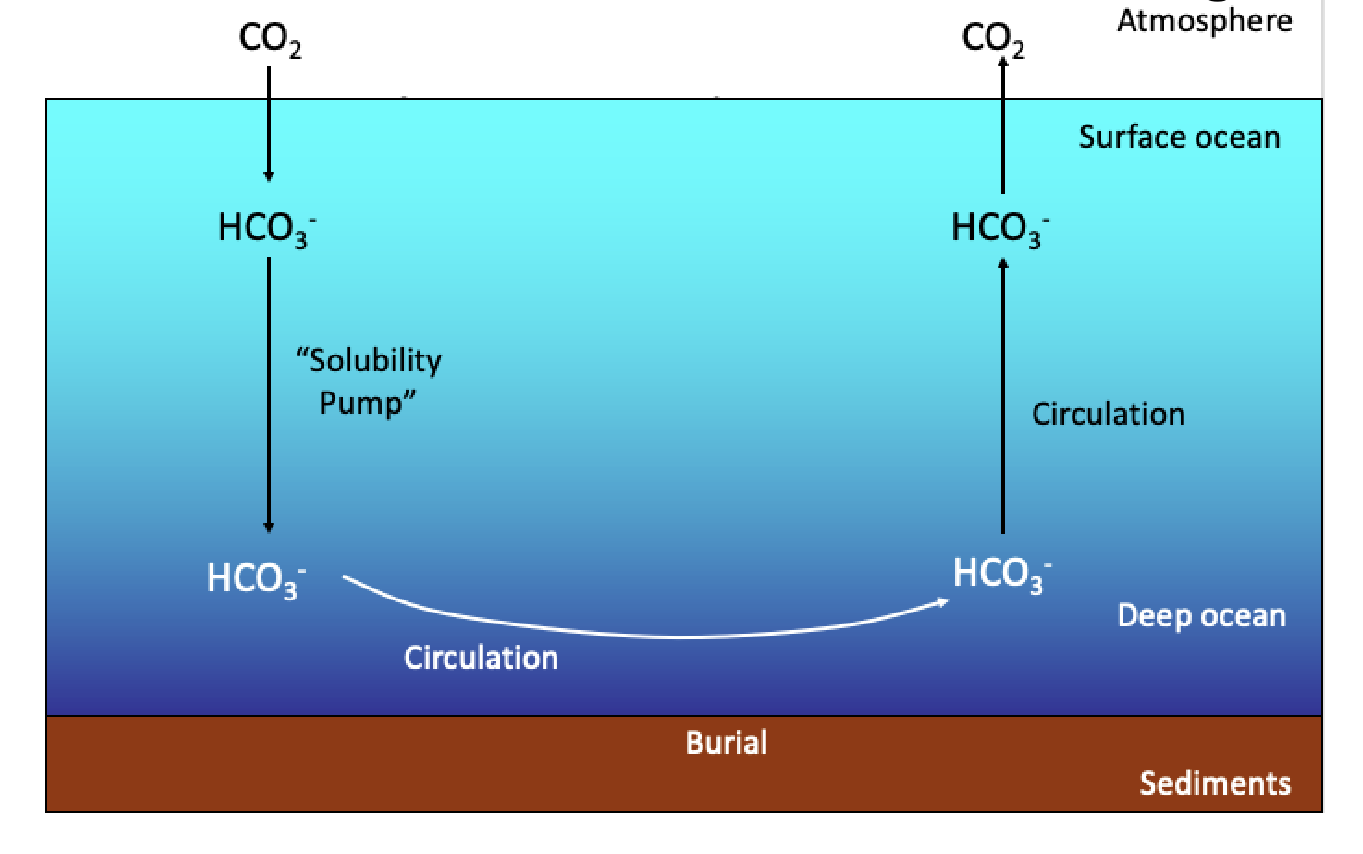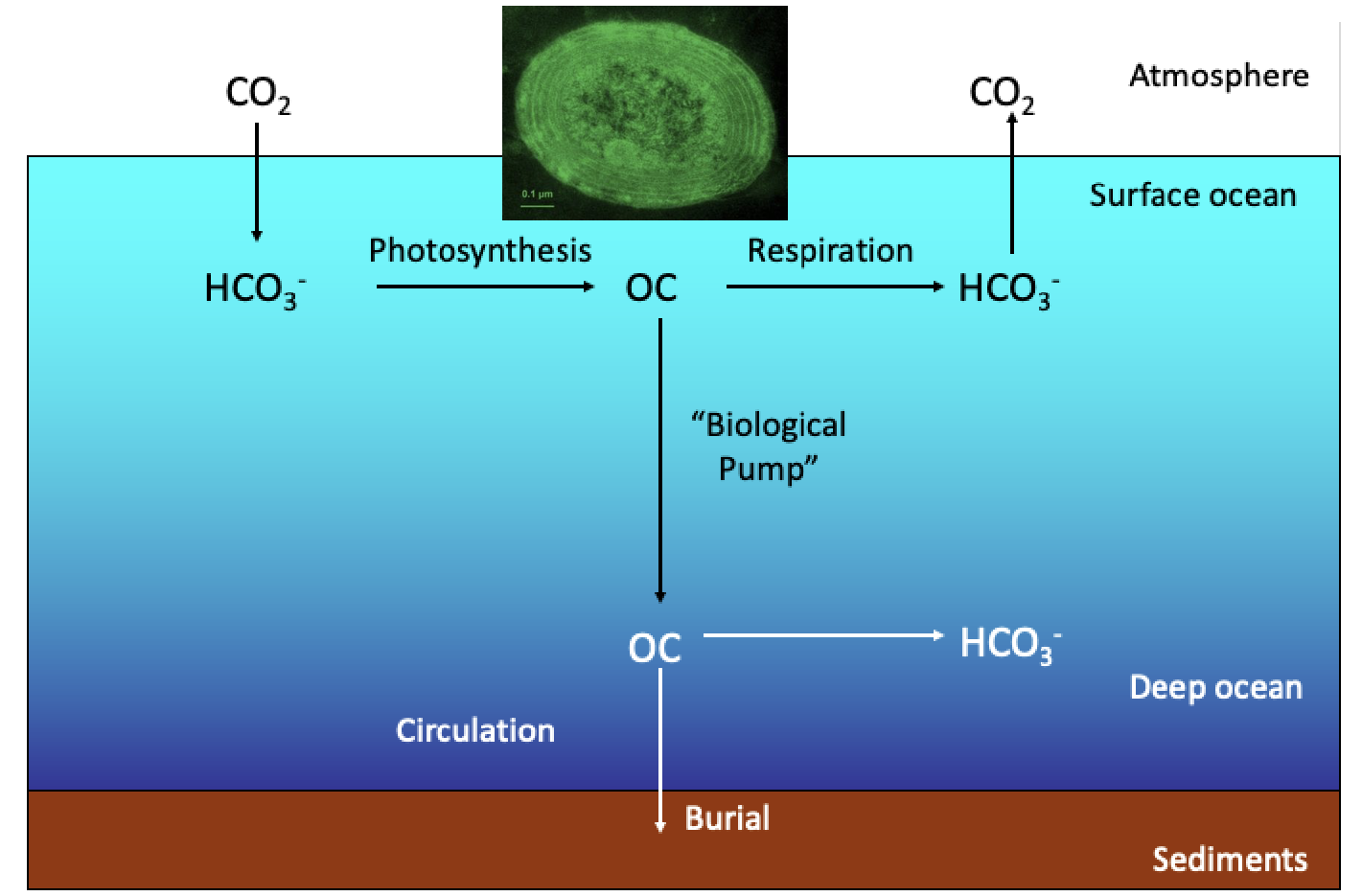Marine Ecology Test 1
1/66
There's no tags or description
Looks like no tags are added yet.
Name | Mastery | Learn | Test | Matching | Spaced |
|---|
No study sessions yet.
67 Terms
Ocean Anthropocene
specific and cascading anthropogenic impacts on marine ecosystems including positive an dnegative human impacts in the forms of destruction, thrests, interventions,managment, conservation and communications.
inclusive science communication
seeks to build further methods for reaching marginalized groups that are often left out by typical top-down science communication
5 guiding questions of ocean studies in the Anthropocene
1) What is the Ecology of the organism/habitat?
2) What are the threats, stressors, and problems?
3) How do we measure threats and ecology (1 and 2)?
4) How do we save, manage, and conserve it?
5) How do we communicate it?
4 “oceanograpy” of marine sciecne basics
1) Biological oceangraphy
2) Chemical oceanography
3) Geological oceanography
4) Physical oceanography
Physical properties of seawater
temperature: -2 degrees C- 40 degrees C
pressure: the deeper the stronger the pressure
salinity: about 33ppt-38ppt
Color:blue,borwn,green and red
Strong conductor for sound
Oxygen content: higher in cold water than hot water
Solubility pump
Ocean takes up atomospheric CO2. CO2 reacts with water and forms a balance of several inorganic carbons

The Biological Pump
The transformation of CO2 into organic carbon then sinking in the deep ocean and decomposing at depth. “Marine Snow”

Links between the ocean and climate change
Since the Industrial Revolution, ocean has absorebed 30% of all CO2
Absorbed 90% of heat gnerated by emissions
Increased SST, ocean acifiication and sea level rise.
Ocean Zones In Order (top to bottom)
Epipelgaic zone- light zone “euphoric” or “photic”
Mesopolgic- middle zone, some light
Bathypelagic- deep zone, no light “aphonic”, 75% of living space in the ocean
Abyssalpelagic- deep extending to seafloor
Hadalpelagic- deep open trenches
(Every Morning Beyonce Acts Heroically)
3 ecological categories of marine organisms:
1) free-floating plankton (phytoplankton, zooplankton)
2) Nexton- strong swimmers
3) Benthos- bottom dwellers
Importance of currents in marine ecology and conservation
distribution of nutrients
Habitat distribution
upwelling
critical for marine productivity. Sea life is concentrated at surface, but organic material is deep below. Sweep vital nutrients back to surface.
Downwellings
sinking of surface water. Oxygen rich water flushed the deep sea. Mainly in polar regions.
marine conservation
the protection of marine species and ecosystesm in oceans and seas worldwide. Also involves mitigating human activites such as overfishing, habitt destruction, pollution, whaling and other issues that impact marine life and habitats.
History of Marine Conservation
Really began in 1970-1980s
IUCN (1940)- marine protected area and multi-national agreements
Undersea explorations and technolgoy (1970s)
Endangered Species conservation act (1970)
UN resolution and restoring fisheries and marine ecosystems
UN decade for ocean sustabinability and restoration (2021-2030) His
Historically which species were given attention
Focused on things people eat or megafauna.
Shifting baselines
change in how a system is measured against pervious reference points (which themselves can be changes from an even earlier system state). The “new normal”.
the next generation does without refrence to what previous generations have documented
Gradual shift of the baseline in terms of species, ecosystem, thing, and at what past levels.
Daniel Pauly
talked about shifiting baselines
Studies the human impact on global fisheries
Components of Marine Conservation
human impacts- increase of CO2, boats, gas spills, etc
techniques- turtle excluder device
laws and treaties - Marine Mammal Protection Act (1972). Convention on Fishing and Conservation of Living Resources of the High Seas
organizations, events initivatives- Oceana, Sea Shepherd, Reef Watch, NOAA
Differenes between Marine Conservation and Terrestrial Conservation
Sea is much larger than the terrestrial realm.
Marine species are poorly known compared to those on land
Dispersal stanges are usually smaller- and have longer potential dispersal distances. (Home ranges are larger, body sizes vary, transport of nutrients and organisms over massive distances)
size classes are different
spatial ecology is fundamentally different (structure-formers are smaller: think trees vs corals)
Sea is geochemically downhill (things flow from land to sea)
Humans depend far more on marine wildlife
Nations and marine jurisdictions/ ownership- across boundaries and mismatch of scale= overall less protection (disparity of conservation capabilties between wealthy and poor nations).
Marine ecology
Scientific study of marine-life habitats, populations, and interactions among organisms and the surrounding environment.
Ecosystem function
How an ecosystem works
Sum of all interactions, services, processes, values and environmental change
Depends on structure, biodiverstiy, productivity and energy flow.
r-strategy
organisms produce many offspring with little parental care. Often in unstable environemtns with high mortality rates for young.
k-strategy
smaller number of offspring but invest more resources into its survival. Slower maturation and more parental care.
morphology
structure or shape of an organism, growth pattern
physiology
biological processes that occur for an animal to exist, “how an animal works”, and regulates
ecological feedbacks
the effect that change in one part of an ecosystem has on another and how this effectt then “feedbacks” to effect the source of the change including more or less of it.
ecological restoration
the process of assisting the recovery of an ecosystem that has been degraded, damaged, or destroyed.
ecological tipping point
a critical threshold where gradual enviromental changes trigger a rapid, often irreversible, shift to a new, usually degraded, stable state for an ecosystem
ecotone
the area wehre two communities interact. the transition zone between two biomes where communities meet and integrate
symbiosis
interaction between two different organisms living in close physical association
mutualism
mututally benifical interaction between individuals of two species
facultative mutualism
not essential for the survival of either species (independent)
obligate mutualisms
essential for survival of one or both species (dependent)
endosymbiosis mutualism
symbiont lives inside host
ectosymbiosis mutulaism
symbiont lives outside host
purpose of science communication
relationship between science and society
informing, educating and rasing awareness
communication strategy
critical to equality, diersity, STEM and access
Ivory tower of Science
“An environment of interllectual pursuit disconnected from the practical concerns of everyday life”
deficit model
one way
public scepticism towards science caused by lack of adequate knowledge about science
dialouge model
3rd party help, engagment, bidirectionality
debate anddialogue
scientists must learn to communicate
why engage in science communication
cultivate interest and enjoyment
you have the responsibility as an ambassador
People make an enormous number of decisions every day, most based on science
add to public scientific literacy, inform the voting population, change policy, secure funding
ridge to reef conservation
intergrated “whole-of-ecosystem” or integrated management approach
Inter-connections and managment
land and seascapse conservation
types of estuaries
salt marshes (temperate)- salt tolerant grasses
mangrove forests (tropics)- 70% of tropical coastlines
functional role of magrove habitats
Mangroves are a major component of over 60% of tropical coastlines
critical habitat for many marine organisms
bouncers of the coast
biology of magroves
tree/shrub that grows in saline coastal sediment habitats
faculative halophyte
adaptations of magroves
salt glands: prevent plasmolysis.
stomata: sunken in cuticle and epidermis. Allow gas exchange for photosynthesis. Restricts opening to conserve water
cuticle: thick waxy layer surrounding the leaf. Water proof and succulent leaves
mangrove distribution
moving more northward, and is increasing along coasts
intertidal ecology
transition zone betwee land and ocean
dominated by algae using lots of sunlight
abundant food, highly productive
stressful habitat: wave action, desiccation, tides, temperature
costal intertidal zones
supratidal, intertidal (upper, middle, and lower), and subtidal
ecological niche
how, when and where it fits in to the natural world
fundamental niche
habitats it can live and the resources it can exploit
realized niche
habitats it actually lives and the resources it actually consumes, given interactions with other species
kelp forests
most productive cold water marine habitat
requires lots of water movement
kelp forest biology
holdfast root, blades, and air bladders
blue carbon
carbon captured by costal ocean ecosystems
ecosystem services of kelp forests
medicine
removing carbon and nutrient pollution
reduce wave size by 60%
ecosystem services of costal habitats
nursery and breeding grounds → high movemtn of organisms and tropic energy between habitats
costal plants and algaw filter water and produce O2
Erosin control, and costal barrier
Blue carbon= marine carbon sequestration
threats to costal habitats
costal developmetn
runoff
agriculture fertilizer and pesticides, sedimentation, climate change, invasive species, overfishing
marine biological diversity
comprehensive definition of biodiversity encompasses variety at all levels, from genes to ecosystesm
why is species diversity important
ecosystem services
a focal point of ecology and evolution
porvides a varietry of diets and robust food webs
impacts conservation and managment plans
resilience!
marine biodiverstiy credits
assigning economic value to marine biodiversity so that protecting it is finacially suported
environmentally focused on protecting and restoring marine ecosystems
marine diversity hotspots
geographic area that harbours a disproportionate number of species, usually endemic
Largest marine hotspots
Indo-Pacific coral triangle: huge in species richness. 76% our world’s corals, 2000 species of fish.
Galapagos: high endemism and uniqueness (not sheer numbers). 2,900 marine species. 20% of marine life here is endemic.
categories of diverstiy
taxononic diversity: number and abundacne of species
functional measures of diversity: focus on traits
genetic diversity: diversity in DNA between individuals of a speices
common metrics for diversity
dominance- most common species
species richness- measure of the number of species in a sample.
species diversity- measurement of how evenly distributed organisms are among species (based on proportion)
biocriteria- index or rarity or ecosystem haelth based on species rarity or sensitvity categories
how to calculate species richness
Species ricness = total number of species / samplign area
how to calculate species diversity
Diversity = (1/sum of (proportion of each species²))